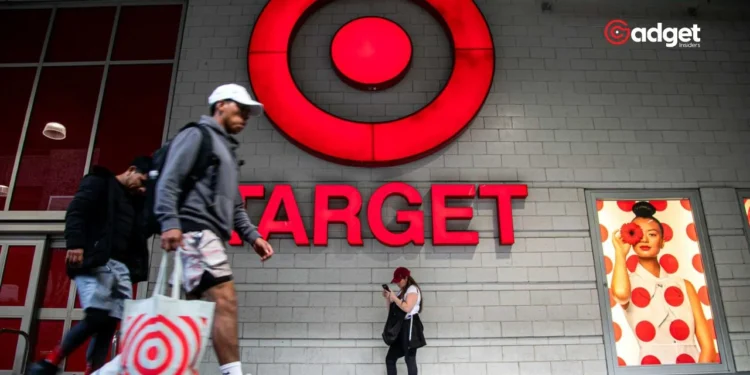Target, long celebrated for its stylish yet affordable merchandise, has seen its shine fade amidst rising inflation. Known affectionately as “Tar-zhay,” the retailer’s latest report reveals a concerning trend: sales at stores open for at least one year dropped by 3.7% during its most recent quarter compared to the previous year.
This marks the fourth consecutive quarter of declining sales for the company, causing its stock to fall around 7% in pre-market trading.

Discretionary Spending Decline
The primary culprit for the sales slump is a decrease in discretionary spending. As inflation drives up prices, consumers are prioritizing essential items over non-essential goods. Target’s core middle-class customer base, feeling the pinch of higher prices, has cut back on purchases like home decor, electronics, and non-essential clothing. Instead, they’re focusing their spending on groceries and everyday necessities.

Comparison with Competitors
The company’s merchandise mix, heavily weighted towards discretionary items, is also contributing to its struggles. Unlike competitors Walmart and Costco, which offer a more balanced mix of essential and non-essential goods, the retail giant’s inventory is more skewed towards the latter. More than half of Target’s merchandise is discretionary, while Walmart gets around half of its sales from groceries.

Walmart’s recent performance underscores this disparity. The retail giant reported a 3.8% increase in sales last quarter, highlighting its stronger appeal to budget-conscious shoppers seeking everyday essentials.
Strategic Moves to Regain Shoppers
In response to these challenges, the retail brand is taking aggressive steps to attract shoppers back. The retailer has slashed prices on over 1,500 popular items, ranging from butter to laundry detergent, to lure inflation-wary consumers. This price-cutting initiative, launched recently, aims to make Target more competitive with its rivals.
Additionally, the company has introduced a new house brand called Dealworthy. This budget-friendly line includes 400 items, from phone chargers to disposable plates and underwear, designed to compete with dollar stores and Walmart. By offering more affordable options, Target hopes to regain its appeal among cost-conscious shoppers.
The Road Ahead for Target
Target’s efforts to navigate the challenges posed by inflation and shifting consumer spending habits are crucial for its future success. The retailer’s ability to balance its merchandise mix and offer competitive prices will be key in attracting shoppers back to its stores.
As the economic landscape continues to evolve, the company’s strategies will play a vital role in determining its place in the retail sector.
Quotes:
- “Target is a bellwether for consumers’ spending habits and the retail sector as a whole,” highlighting the retailer’s significant influence on broader market trends.
- “Target has slashed prices on more than 1,500 popular items starting Monday,” emphasizing the company’s proactive approach to pricing strategy.
The company aims to restore its reputation and regain its footing in a challenging retail environment by focusing on competitive pricing and expanding its range of essential goods.










